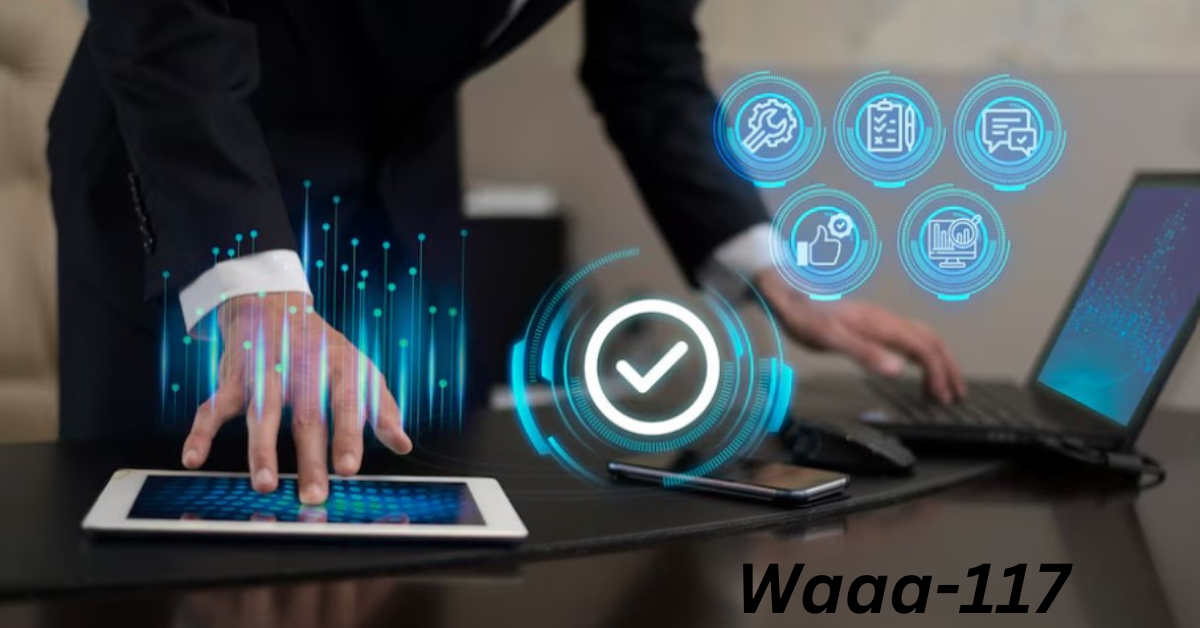In an age where technology is transforming how we learn, PLLSfored emerges as a significant player. This innovative approach to education leverages technology to enhance learning experiences and outcomes. This article explores what PLLSfored is, its benefits, challenges, and how it’s shaping the future of education.
What is PLLSfored?
PLLSfored is a groundbreaking educational model that focuses on personalized learning and lifelong skill development. It integrates various learning methodologies and technologies to create a tailored educational experience for each student. Unlike traditional models, PLLSfored emphasizes individual learning styles, paces, and interests.
The Concept of Personalized Learning
Personalized learning is at the core of PLSfored. It allows educators to customize the curriculum according to the needs and preferences of each student. This approach not only fosters engagement but also ensures that learners grasp concepts effectively.
The Evolution of Learning Models
To understand PLLSfored better, it’s essential to look at the evolution of learning models over the years.
Traditional Learning
Traditionally, education has followed a one-size-fits-all approach. Students are taught in a classroom setting, following the same curriculum and pace. While this model has served its purpose, it often overlooks individual learning differences.
The Shift Towards Technology-Enhanced Learning
With the advent of technology, educational paradigms began to shift. The integration of online resources, interactive platforms, and multimedia content has provided new avenues for learning. However, many of these initiatives still adhered to the traditional framework, failing to fully leverage technology’s potential.
Enter PLLSfored
PLLSfored represents a revolutionary shift in this trajectory. It combines the advantages of technology with personalized learning, creating a more effective and engaging educational experience.
Key Components of PLLSfored
Understanding the key components of PLLSfored helps to appreciate its significance in modern education.
1. Adaptive Learning Technologies
Adaptive learning technologies are essential to PLSfored. These tools analyze students’ performance in real-time and adjust the curriculum accordingly. By using algorithms, they can identify areas where students struggle and provide additional resources or alternative explanations.
2. Competency-Based Education
PLLSfored promotes competency-based education, where students progress through their studies based on their ability to demonstrate mastery of a subject. This model encourages deeper understanding and practical application of knowledge.
3. Collaborative Learning Environments
Collaboration is a fundamental aspect of PLSfored. Students work together on projects, share ideas, and learn from one another. This collaborative spirit enhances critical thinking and problem-solving skills.
4. Continuous Feedback Mechanisms
Feedback is vital in any learning process. PLLSfored incorporates continuous feedback mechanisms, allowing students to understand their strengths and areas for improvement. This ongoing dialogue between educators and learners fosters a growth mindset.
Benefits of PLLSfored
The adoption of PLLSfored brings numerous benefits to students, educators, and institutions.
1. Enhanced Engagement
PLLSfored caters to individual interests and learning styles, resulting in heightened student engagement. When learners are invested in their education, they are more likely to succeed.
2. Improved Learning Outcomes
By focusing on mastery and personalized pathways, PLLSfored leads to better learning outcomes. Students develop a solid understanding of concepts and are better prepared for real-world applications
3. Flexibility and Accessibility
One of the key advantages of PLLSfored is its flexibility. Students can learn at their own pace and choose when and where to study. This accessibility makes education more inclusive, catering to diverse learning needs.
4. Lifelong Learning Skills
PLLSfored instills essential skills for lifelong learning. Students become adept at self-directed learning, critical thinking, and adaptability—skills crucial for success in the 21st century.
Challenges and Considerations
While PLSfored holds great promise, it’s important to address the challenges that come with implementing this model.
1. Technology Accessibility
Not all students have equal access to technology. Disparities in access can create barriers to fully embracing PLSfored. It’s crucial to ensure that all learners have the necessary tools and resources.
2. Teacher Training
Educators play a vital role in the success of PLSfored. Comprehensive training and support are needed to help teachers adapt to this new model effectively. Professional development programs must be in place to equip educators with the skills to facilitate personalized learning.
3. Resistance to Change
Change can be met with resistance, especially in established educational institutions. Stakeholders may be hesitant to shift from traditional methods to a more innovative approach. It’s essential to communicate the benefits of PLLSfored clearly and demonstrate its effectiveness.
The Future of PLLSfored
As we look ahead, the future of PLLSfored appears promising. The ongoing advancements in technology, coupled with a growing emphasis on personalized education, are paving the way for broader adoption of this model.
1. Integration of Artificial Intelligence
The integration of artificial intelligence (AI) into PLSfored is on the horizon. AI can analyze vast amounts of data to provide even more personalized learning experiences. From intelligent tutoring systems to predictive analytics, AI has the potential to revolutionize how students learn.
2. Global Collaboration
The digital age allows for unprecedented global collaboration. Students from different parts of the world can connect, share knowledge, and work on projects together. PLSfored can facilitate these interactions, fostering a global perspective in education.
3. Emphasis on Social and Emotional Learning
Beyond academic skills, PLLSfored recognizes the importance of social and emotional learning (SEL). As educators focus on the whole student, there will be a greater emphasis on fostering emotional intelligence, resilience, and interpersonal skills.
4. Lifelong Learning Ecosystem
The concept of lifelong learning will become integral to PLLSfored. Education won’t stop at graduation; instead, individuals will continue to seek knowledge and skills throughout their lives. This ongoing learning journey will be supported by technology and accessible resources.
Conclusion
PLLSfored is not just a trend; it represents a fundamental shift in how we approach education. By embracing personalized learning, technology, and collaboration, we can create an environment that nurtures engaged, skilled, and adaptable learners. As we move forward, it’s essential to address the challenges and ensure that all students have access to this transformative educational experience. The future of learning is here, and PLSfored is at the forefront of this exciting evolution.
FAQs About PLLSfored
1. What is PLLSfored?
PLLSfored is an innovative educational model that emphasizes personalized learning and skill development through technology integration. It tailors the learning experience to meet the individual needs, preferences, and paces of students.
2. How does PLLSfored differ from traditional education?
Unlike traditional education, which often follows a one-size-fits-all approach, PLSfored focuses on personalized learning paths. It allows students to learn at their own pace, promotes competency-based education, and fosters collaboration among learners.
3. What are the key components of PLLSfored?
Key components of PLSfored include:
- Adaptive Learning Technologies: Tools that adjust the curriculum based on students’ performance.
- Competency-Based Education: Students progress upon demonstrating mastery of a subject.
- Collaborative Learning Environments: Opportunities for students to work together and learn from each other.
- Continuous Feedback Mechanisms: Ongoing feedback that helps students identify their strengths and areas for improvement.
4. What are the benefits of adopting PLLSfored?
The benefits of PLLSfored include:
- Enhanced engagement and motivation among students.
- Improved learning outcomes and deeper understanding of concepts.
- Flexibility and accessibility for diverse learners.
- Development of lifelong learning skills such as critical thinking and adaptability.
5. What challenges does PLLSfored face?
Some challenges of implementing PLLSfored include:
- Technology Accessibility: Ensuring all students have access to necessary technology.
- Teacher Training: Providing educators with the skills and knowledge to effectively facilitate personalized learning.
- Resistance to Change: Overcoming hesitance among stakeholders to shift from traditional methods to innovative approaches.
6. How might technology play a role in the future of PLLSfored?
Technology, particularly artificial intelligence (AI), is expected to play a significant role in the future of PLLSfored. AI can analyze data to provide even more personalized learning experiences, leading to improved educational outcomes.
7. What is the significance of social and emotional learning in PLLSfored?
PLLSfored recognizes the importance of social and emotional learning (SEL) in education. By fostering emotional intelligence, resilience, and interpersonal skills, PLSfored prepares students not only academically but also socially and emotionally for their future.
8. Is PLLSfored suitable for all types of learners?
Yes, PLLSfored is designed to cater to diverse learning needs. Its personalized approach ensures that all students, regardless of their learning styles or abilities, can benefit from the educational experience it offers.
9. How can institutions implement PLLSfored effectively?
To implement PLSfored effectively, institutions should focus on:
- Providing access to adaptive learning technologies.
- Offering professional development and training for educators.
- Fostering a culture of collaboration and innovation.
- Ensuring equity in technology access for all students.
10. Where can I learn more about PLLSfored?
To learn more about PLLSfored, consider exploring educational technology resources, attending relevant workshops or webinars, and engaging with communities focused on personalized learning and innovative educational practices.





